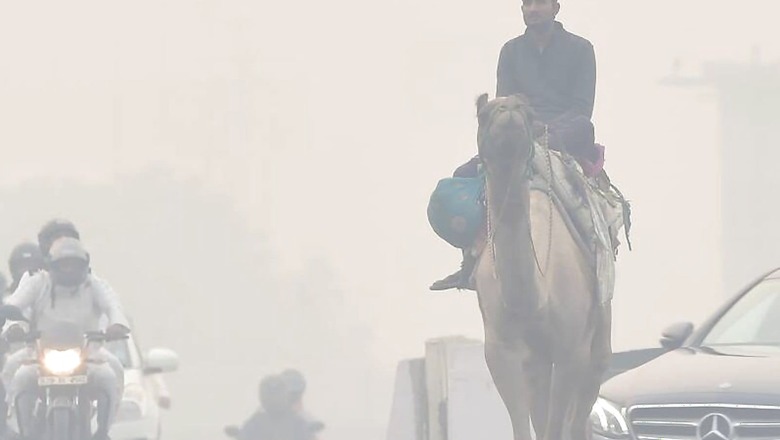
views
For over a week now, the air quality index in Delhi has stayed in the “very poor” category as the AQI was recorded at 347 on Sunday in the national capital. The air quality was forecast to improve improve significantly from Sunday owing to relatively strong winds.
On Saturday, the System of Air Quality and Weather Forecasting And Research (SAFAR) recorded Delhi AQI at 374. It was slightly better on Friday at 370, according to the Central Pollution Control Board (CPCB).
Meanwhile, the AQI in neighbouring Ghaziabad (346), Gurgaon (348), Noida (357), Greater Noida (320) and Faridabad (347) was also recorded in the “very poor” category on Saturday.
An AQI between zero and 50 is considered “good”, 51 and 100 “satisfactory”, 101 and 200 “moderate”, 201 and 300 “poor”, 301 and 400 “very poor”, and 401 and 500 “severe”. To control air pollution, the Delhi government on Wednesday announced a ban on the entry of trucks carrying non-essential items into the city and a closure of schools and colleges till further orders.
Newborns and children are more susceptible to the air pollution inside and outside homes which may have adverse impact on their cognitive development.
The polluted air affects unborn children in mothers womb which may lead to premature birth affecting brain and cognitive development of the baby, said Dr Chandra Mohan Kumar, Additional Professor, Pediatrics, AIIMS Patna told IANS.
He said that air pollution is one of the major killers of under five children accounting for 1:10 deaths indirectly as an underlying cause. More than 90 per cent children below 15 years of age are breathing toxic air and the figure goes to as high as 98 per cent in low and middle income countries as compared to 50 odd per cent in developed nations, said Dr Kumar.
Citing the reason for children being disproportionately more susceptible to the effects of air pollution, he said, “They breathe more rapidly as well as they also live closer to the ground, where some pollutants reach peak concentrations and absorb more pollutants”.
Read all the Latest India News here



















Comments
0 comment